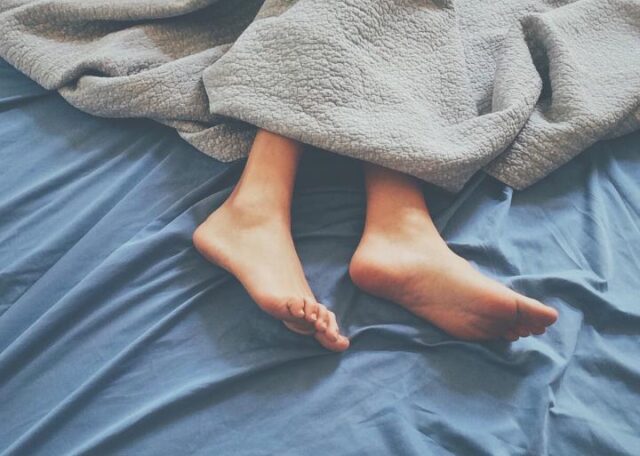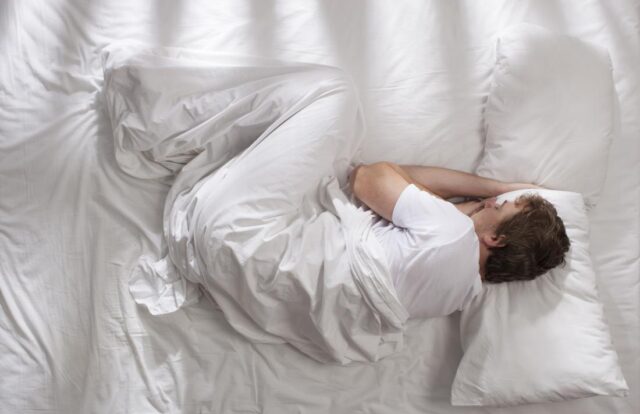
From muscle growth to healing and tissue repair, a wide range of biological processes take place in the human body while asleep. Sleep plays an important role in one’s physical, mental, and emotional health as well as their overall well being. While sleep quantity is important, getting quality sleep every night can have a huge impact on your happiness, mental clarity, productiveness at work, and overall health.
Researchers have actually shown that people with sleep deprivation are at a higher risk of suffering from chronic health issues such as diabetes, heart disease, HBP, stroke, and mental illnesses, just to name a few.
But did you know that your sleeping position can have a huge impact on your sleep quality and overall health? Well, now you know! According to Kristen Greif from Sleep Authorities, sleeping in a poor position is a major cause of several problems, including back pain, neck pain, acid reflux, sleep apnea, fatigue, poor circulation, headaches, and stomach problems.
This is not to forget that your sleeping position may also be affected by the mattress, pillows, and bedding you lie down on. All these factors are important as far as the quality of your slumber is concerned, but one thing is for sure… a poor sleeping posture will negatively affect your health in one way or another.
Well, at this point, it’s also safe to say that no sleeping position works for everyone. The best sleeping position for you depends on your specific needs. In this article, we’ll take a look at some of the most popular sleeping poses as we try to find the best sleep position for your body.
On Your Back (Soldier)

While not so many people sleep on their backs, it can be a great sleeping position in some cases. This is especially because it puts your spine, head, and neck in a natural resting position. This ensures that you won’t wake up experiencing pain in those areas since they’re spared from the pressure. Additionally, the position also helps avoid acid reflux in your sleep and as long as your head is well supported by a pillow underneath, you won’t have to worry about food and acid coming up your gut. Nonetheless, the major downside of sleeping in facing the ceiling is that it can interfere with your respiratory system, causing the tongue to block your gas pipe to some extent. This often leads to severe snoring, especially in people suffering from sleep apnea. If you’re obese, pregnant or a bit extra around the abdominal area, sleeping on the back is also the last thing you want to do as it could lead to back pain.
On Your Stomach

Some like to call this sleeping position “Firefall”. It can be a great position for noisy sleepers, but it’s pretty much bad for many other reasons. For starters, sleeping on your stomach can put extra strain on your neck and back, especially if done for extensive hours. This is because at this pose, your spine is not in its a neutral position. It could also lead to other musculoskeletal issues such as muscle aches, numbness, tingling, and nerve pain. However, it’s natural to feel the urge to lie down on your stomach from time to time. If you must, it’s best to do so with your face facing downward, perhaps with a pillow beneath your chin to allow you some room to breathe. If it’s a one-time thing, there’s a high chance you’ll switch to another position after falling asleep.
Side Sleeping

Want to sleep like a log? This is one of the positions you can achieve just that. It’s when you sleep on your side with your trunk and legs straight, relatively. It’s a great position to help you sleep better and prevent back and neck pain since it keeps your spine in straight alignment. Snoring is also less likely since the airways are naturally kept open in this position. This makes it a great position for those of you prone to sleep apnea. However, one potential drawback is that you could end up with wrinkles since almost half of your entire face keeps pushing against your pillow every night.
Fetal Sleep Position

It is estimated that at least four in every ten adults sleep in the fetal position. In this pose, your trunk is slightly curved and your knees are bent as you sleep on the side. It’s unarguably the best position if you want to fall asleep quickly. As a matter of fact, it’s the best sleeping position for pregnant women, snorers, and just about any other person. Expectant women are, however, advised to sleep on her left side while in this position to protect your fetus from being pressed on by the liver, which is normally located on the right side of the abdomen.
Also, it’s advisable not to sleep curled up too tight in the fetal position as this could restrict the activity of the diaphragm. You can make this position more comfortable by placing a pillow in-between your knees, which helps reduce pressure on the hip region.
We can never exhaust the benefits of quality sleep. Nonetheless, the quality of sleep you get every night may depend on the position you sleep in. Sleeping in the wrong position may also cause disturbance to your partners. From the few pointers above, you hopefully know the best sleeping position for your body by now.







